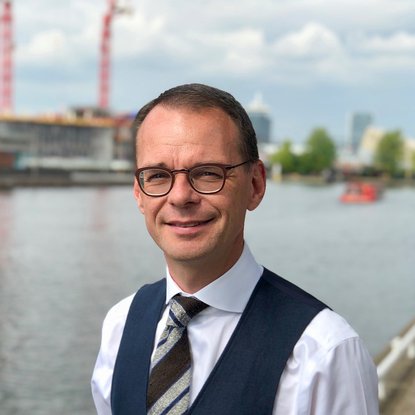Good quality of environmental factors is important for citizens in Amsterdam, especially for the vivid crowd of active urban dwellers who travel by bike and on foot between home, work and for errands. These commuters are exposed to polluted air in general and urban heat during warm summers and can benefit from data on environmental factors that affect their health.
Air pollution causes substantial health risks. The quality of air depends on the time of day, location in a city and traffic intensity as well as weather conditions like wind speed. Urban heat islands are another health risk. During summers, cities are substantially warmer than the countryside due to the morphology in street canyons, the low green vegetation cover and heat emitted by humans. Such heat islands have negative consequences for human health, labor productivity and energy demand. It was found that the “urban heat island effect” makes Amsterdam on average 6 degrees Celsius warmer than its surrounding plus heat loads differ between neighborhoods.
Healthy Urban Route Planner (HURP)
Amsterdam citizens currently do not have access to suitable information with which they can minimize exposure to negative environmental factors, such as air pollution and urban heat. They view urban air pollution instead as unavoidable. The Healthy Urban Route Planner (HURP) project empowers citizens to make healthier choice in real time with high resolution data on forecasts. In turn, this project raises awareness and provides options to avoid environmental risk factors - it simply allows citizens to take the healthiest route to their chosen destination.
HURP developed a route planner for bikers and pedestrians that suggests routes and departure times. Each suggestion is based on forecasts for weather and air quality within 100 meters and updated every day. The planner offers a healthy route in addition to traditional optimized travel time and distance which in turn contributes to a connected and vital city.
The green line provides a more healthy route than the blue line
How does it work?
At first, pollution emissions are mapped based on traffic data and industrial sources. An urban land use map characterizes density to estimate urban heat storage. These maps provide the data/input a forecast of urban air quality and weather to predict the transport and chemistry of air pollutant. The forecast maps also temperature and pollutant concentrations.
Each hour, the weather-air quality model feeds data to the route planner in order to identify healthy routes. The planner raises awareness of heat and air quality issues in Amsterdam and provides innovative adaptation tool for its citizens. The planner is developed by a team of atmospheric and geo-information scientists in cooperation with the GGD Amsterdam and the Fietsersbond Amsterdam.
| Duration: |
|
